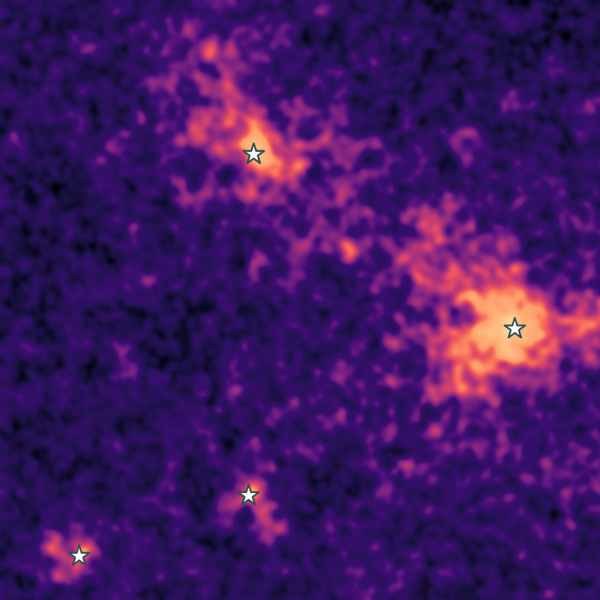Pulsars are rapidly spinning neutron stars—remnants of massive star explosions—that blast electromagnetic radiation at regular intervals ranging from seconds to milliseconds. As a pulsar rotates, its beams of radiation sweep across outer space like a cosmic lighthouse. Scientists have identified high-energy gamma-ray emission around some pulsars, called TeV halos, but it remains unclear whether TeV halos are unique to individual pulsars or a universal feature of all pulsars.
In a paper published in Physical Review Letters and featured in APS Physics, the High-Altitude Water Cherenkov Gamma-ray Observatory (HAWC) Collaboration reports on the the detection of TeV halo-like emission from middle-aged pulsars of more than a few hundred thousand years old at a significance level of 5.10 σ. This result indicates that these halos may be a common feature of middle-aged pulsars.

Situated near Puebla, Mexico, at an altitude of 13,500 feet, HAWC observes gamma rays and cosmic rays between 100 GeV and a few hundred TeV. HAWC uses a network of 300 large water tanks, each filled with about 200 metric tons of water, that are nestled between two dormant volcano peaks. Using HAWC data, the researchers selected isolated pulsars that had been previously detected by other facilities and were within HAWC’s field of view. They focused on pulsars older than 20,000 years, beyond the age at which TeV halos are expected to form.



“If TeV halos are a universal feature of pulsars at a certain evolutionary stage, then we would expect to observe very high-energy extended emission around most middle-aged pulsars,” explains Sara Coutiño de León, a former postdoctoral associate at the Wisconsin IceCube Particle Astrophysics Center (WIPAC) at the University of Wisconsin–Madison (UW–Madison), who is now at the Instituto de Física Corpuscular in Valencia, Spain.
Coutiño de León led the study along with UW–Madison PhD student Hongyi Wu and Ke Fang, an assistant professor of physics at UW–Madison and previous US spokesperson for HAWC.
The researchers used a refined list of middle-aged pulsars to perform a “stacking” analysis that combined data from multiple observations to enhance the signal of otherwise obscured objects or phenomena. This was used in comparing models of TeV flux against a background-only hypothesis.
“This result highlights HAWC’s capability to detect extended TeV emission, making it an essential tool for studying middle-aged pulsars and probing cosmic-ray acceleration and confinement in the galaxy,” says Coutiño de León. “By confirming that TeV halos are common around pulsars, this study opens new avenues for future multiwavelength follow-up observations and theoretical modeling of pulsar environments.”
Although many pulsars still remain invisible in traditional wavelengths due to their configurations, TeV halos also offer a new way to identify and study these otherwise hidden pulsars, which will help to expand the population of known pulsars.
“In future studies, we will investigate individual bright TeV halos to understand how they are formed and their connection to the diffuse gamma-ray emission of the Galactic plane,” says Fang. “This result also motivates future searches for these mysterious objects in the southern sky using detectors such as the Southern Wide-field Gamma-ray Observatory.”
+info “Extended TeV halos may commonly exist around middle-aged pulsars,” HAWC Collaboration: A. Albert et al., Physical Review Letters, 134, 171005 (2025). journals.aps.org.
